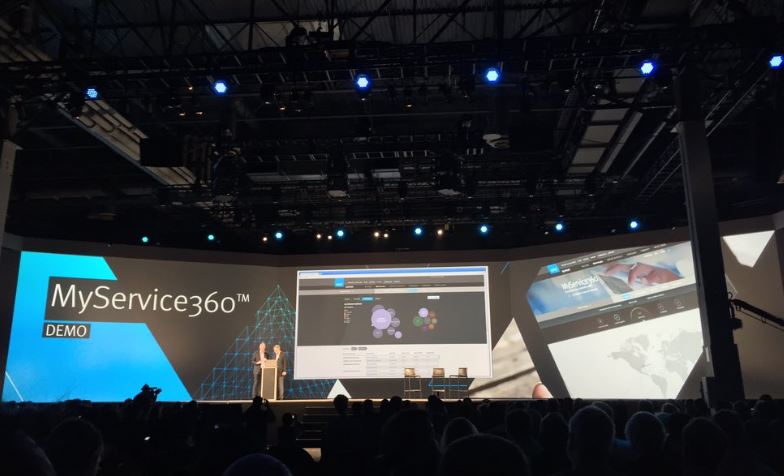
EMC focused on products to modernise the data centre during the second day of the company’s annual conference in Las Vegas.
EMC World, which during the first day was dominated with talk about the takeover by Dell for $67bn, moved to lengthy pitches about some of its latest products.
The pitches, which lasted for almost two hours, started with a VMAX all-flash system that the company revealed on the first day. This, however, was a chance for the company to dive deep into what exactly the product offers.
Fidelma Russo, SVP and GM of the VMAX business unit at EMC, introduced the product going into the capabilities of the product in a tone that would be present throughout the keynote, calling the product a "quantum leap for flash and EMC." One of the reasons for this is because all flash has reached an overall system cost that is now less than the cost of the spinning disk.
While cost has typically been one of the reasons for not going down the all flash route, endurance and longevity has been another. Russo went some way to dispelling this fear by revealing that the amount of backend re-writes have been reduced, which should increase the lifespan of the product.
An important element that all the speakers mentioned is the ability to tier to the cloud, typically Virtustream was mentioned by the EMC executives. The importance of this is that it shows that customers can have access to the benefits of the cloud even when they are using EMC’s on-premises products.
Basically, this keynote was an extended sales pitch of its products, their benefits, why they are so good, industry challenges they overcome and why EMC believes in hybrid cloud.
Pitches were made at businesses both large and small, small with the Unity project, which Jeff Boudreau, SVP and GM for the enterprise and midrange systems division at EMC, went into great detail about.
Much of the focus was on the ease of use with Boudreau demonstrating the user interface, which the company seems particularly pleased with.
Moving through the product line, the company looked at converged and hyper-converged appliances. Curiously while VCE is involved in a lot of these products, the company was barely mentioned.
As I mentioned, cloud is an important element of EMCs hybrid strategy, the company needs it in order to move away from an old world image to being a modern IT business.
VMware falls into the cloud bracket of EMCs strategy and unlike VCE, it received accolades through the keynote of the first day and second day, being mentioned several times as an important element that helps bring innovation to the family of companies.
While Pat Gelsinger, CEO of VMware would not make an appearance during the conference, Ray O’Farrell, CTO and chief development officer at VMware, was present. O’Farrell spoke about virtualisation and the cloud and how businesses look to manage multiple clouds both public and private.
This was something of a breakthrough moment for the conference, while a great deal of focus had been placed on the EMC family and Virtustream being all that a customer would need, VMware showed up and said look, customers want to use Amazon Web Services, Microsoft Azure and Google Cloud Platform as well.
These remarks were the first time that anyone had truly acknowledged the wider market, other than to criticise a competitor. O’Farrell raised this as he revealed that VMware’s vRealise suite would create a management layer across the network of clouds, giving businesses a chance to use EMC and tap into the wider ecosystem.
Although there were plenty attempts at quirkiness during the keynote, it felt very much like business as usual, here are our products, here’s why businesses need them.






